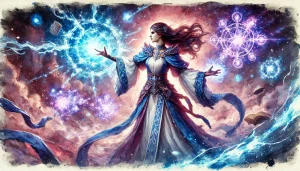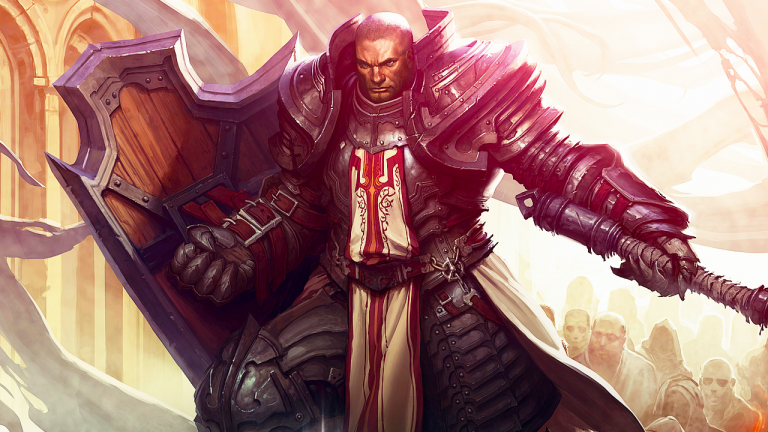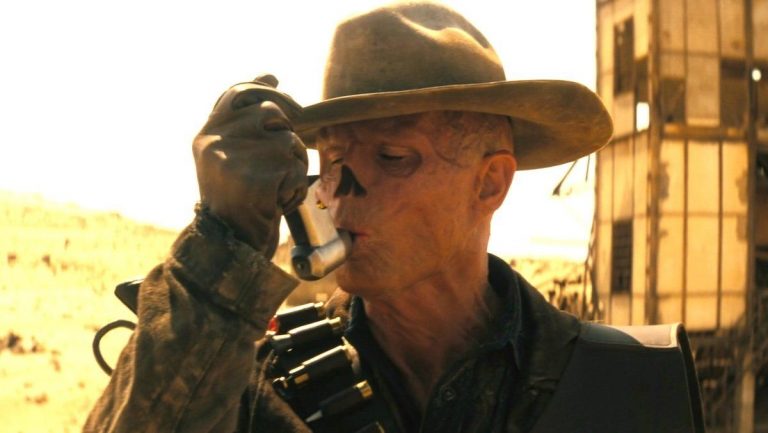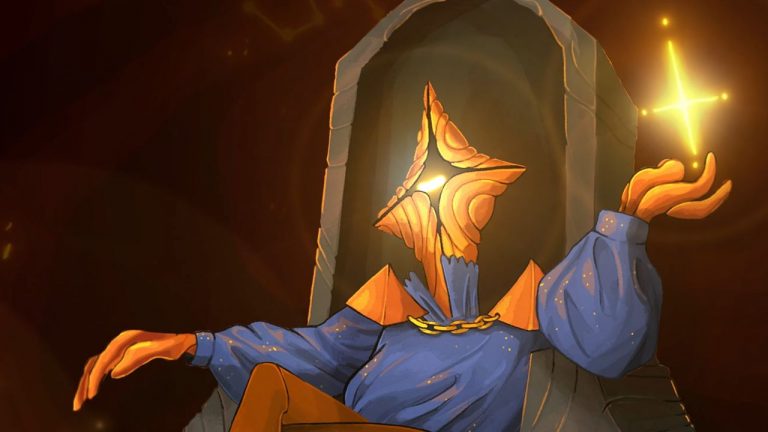In the vast tapestry of fantasy world-building, few elements capture the imagination quite like the names of mighty kingdoms. When it comes to Dwarven realms, these dwarf clan names carry the weight of mountains and the echoes of hammers on anvils. They are more than mere labels; they are the very essence of Dwarven culture, history, and pride – especially when we’re talking about Dungeons & Dragons.
Dwarves, those stout folk of legend, are inextricably tied to the earth. Their kingdoms, carved from living rock and fortified with unyielding iron, stand as testaments to their indomitable spirit and unparalleled craftsmanship. The names of these realms reflect this deep connection to stone and metal, evoking images of grand halls hewn from mountain hearts and forges that have burned for a thousand years.
The significance of a Dwarven kingdom’s name cannot be overstated. It serves as a banner under which clans rally, a declaration of strength to potential foes, and a link to an ancient heritage that stretches back to the very roots of the world. In crafting these names, one breathes life into the bedrock of Dwarven society, creating a foundation upon which epic tales and legendary deeds can be built.
As we delve into the art of naming Dwarven kingdoms, we’ll unearth the linguistic treasures that lie hidden in the depths of fantasy lore. We’ll explore the common themes that run like veins of precious ore through these names, and we’ll forge new monikers that resonate with the power and majesty of the Dwarven people. Whether you’re a dungeon master seeking to enrich your campaign world or a fantasy author crafting the next great saga, this guide will equip you with the tools to create Dwarven realm names that will stand the test of time.
Characteristics of Dwarf Kingdom Names
The names of Dwarven kingdoms are as multifaceted as the gems they prize, each one a reflection of the rich culture and history of these subterranean societies. To truly understand the art of crafting these names, we must first examine their fundamental characteristics.
At the heart of Dwarven nomenclature lies a deep-rooted etymology that draws from ancient, guttural languages. These linguistic roots often mimic the harsh sounds of stone grinding against stone or the rhythmic clanging of hammer on anvil. The resulting names are strong, consonant-heavy, and imbued with a sense of timelessness that befits the long-lived Dwarven race.
The themes and motifs woven into Dwarven kingdom names are as varied as the ores they mine. Mountains feature prominently, symbolizing not only the Dwarves’ physical home but also their aspirations to greatness and their unyielding nature. Stone, in its many forms, is another common element, representing durability, tradition, and the very foundation of Dwarven society. Metals, particularly iron and gold, make frequent appearances, highlighting the Dwarves’ mastery of metallurgy and their appreciation for both practical strength and aesthetic beauty.
Forges and the act of creation are also central to many Dwarven realm names. These references underscore the importance of craftsmanship in Dwarven culture and the pride they take in their ability to shape the world around them. Names incorporating forge-related imagery often evoke a sense of industry, progress, and the transformative power of Dwarven ingenuity.
The structure of Dwarven kingdom names typically follows a compound format, combining two or more elements to create a name that is both descriptive and evocative. This approach allows for a wide range of creative possibilities while maintaining a consistent linguistic style. Common combinations might include a geographical feature paired with a metal (“Ironpeak”), a craft-related term joined with a defensive structure (“Forgehold”), or a noble quality linked to a natural element (“Honorstone”).
It’s worth noting that while these compound names are prevalent, they are not the only format used in Dwarven naming conventions. Some kingdoms may bear single-word names that carry deep significance in the Dwarven tongue, while others might use phrases that describe a key aspect of the realm’s history or purpose. The flexibility of Dwarven naming allows for a rich tapestry of possibilities, each one adding depth and character to the fantasy world in which it exists.
As we continue our exploration of Dwarven kingdom names, we’ll delve deeper into specific examples and elements that you can use to craft your own legendary realms. Remember that each name you create is not just a label, but a story waiting to be told, a history waiting to be unearthed, and a legend waiting to be born.
Examples of Common Elements
The building blocks of Dwarven kingdom names are as diverse as the minerals they extract from the earth. By understanding these common elements, you can begin to construct names that resonate with the essence of Dwarven culture and history. Let’s examine some of the most frequently used components and explore how they contribute to the creation of memorable realm names.
Stone, the very foundation of Dwarven existence, is perhaps the most ubiquitous element in their kingdom names. It represents not only their physical environment but also their steadfast nature and enduring legacy. Names incorporating “stone” often evoke a sense of immovability and eternal strength. “Stonehelm,” for instance, conjures images of a fortress so impregnable that it serves as a protective helmet for its inhabitants. “Granitehold” suggests a realm that is as unyielding as the rock from which it’s carved, its walls and traditions standing firm against the test of time.
Iron, the metal that forms the backbone of Dwarven industry and warfare, is another crucial component in their nomenclature. It symbolizes strength, resilience, and the transformative power of Dwarven craftsmanship. “Ironforge” is a classic example, painting a picture of a kingdom where the fires of creation never die, and the ring of hammers on anvils echoes through cavernous halls. “Ironpeak” might describe a realm that has risen to great heights, both literally and figuratively, through the mastery of this essential metal.
The forge, heart of Dwarven creativity and industry, features prominently in many kingdom names. It represents not just the physical place of crafting, but the spirit of innovation and the pride Dwarves take in their work. “Hammerforge” evokes the rhythmic symphony of creation that defines Dwarven society, while “Forgeheim” suggests a realm where the art of crafting is elevated to a way of life, a true home for those who shape metal and stone.
Mountains, the natural fortresses that house many Dwarven kingdoms, are often referenced in realm names. They symbolize both the physical grandeur of these subterranean civilizations and the lofty ambitions of their inhabitants. “Mountheim” paints a picture of a kingdom that has made its home in the very peaks of the world, while “Skyreach” might describe a Dwarven realm that has built upward, perhaps with towers that pierce the clouds, challenging the traditional image of Dwarves as a solely underground race.
By combining these elements in various ways, you can create names that are both evocative and true to the spirit of Dwarven culture. “Stoneforgepeak,” for example, might describe a kingdom known for its high-altitude smithies, where master crafters work their magic in workshops carved into a mountain’s summit. “Ironmountguard” could be the name of a realm that serves as a sentinel, its iron-clad warriors standing watch over crucial mountain passes.
As you experiment with these elements, remember that the best Dwarven kingdom names do more than just describe a place – they tell a story, hint at a history, and fire the imagination. They are the first step in bringing a fully realized Dwarven civilization to life in your fantasy world.
Suggested Dwarf Kingdom Names
Now that we’ve explored the common elements and characteristics of Dwarf kingdom names, let’s dive into some specific examples. These names are divided into two categories: classic and traditional names that embody the essence of Dwarven culture, and unique and creative names that push the boundaries of conventional naming while still maintaining a distinctly Dwarven flavor.
Classic and Traditional Names
“Stonehelm” stands as a paragon of Dwarven naming conventions. This kingdom evokes an image of an impenetrable fortress, its walls and battlements so formidable that they serve as a helmet for the entire realm. One can imagine vast halls carved directly into a mountainside, their entrance hidden behind cunningly crafted stone facades that blend seamlessly with the natural rock face. Within Stonehelm, generations of Dwarves have lived and worked, their picks and hammers slowly expanding their domain deeper into the mountain’s heart.
“Ironpeak” conjures visions of a realm perched high in a mountain range, its towers and spires wrought from the very iron that forms the lifeblood of Dwarven society. This kingdom might be renowned far and wide for the quality of its ore and the skill of its blacksmiths. The forges of Ironpeak never cool, their fires visible for miles around on dark nights, a beacon of Dwarven industry and craftsmanship.
In the depths of the earth lies “Granitehold,” a kingdom as enduring as the stone from which it takes its name. Here, in vast underground halls supported by columns as thick as ancient trees, Dwarven culture has flourished for millennia. The walls of Granitehold are said to whisper with the wisdom of countless generations, each stone holding memories of the great deeds and greater crafts that have shaped Dwarven history.
“Hammerdeep” resonates with the constant rhythm of creation. In this realm, the ancient forges have burned continuously since their first lighting, their fires tended by an unbroken line of master craftsmen. The very air of Hammerdeep is thick with the scent of hot metal and the sound of hammers shaping destiny. It’s said that the weapons and armor forged in the depths of Hammerdeep are imbued with a portion of the kingdom’s indomitable spirit.
Lastly, we come to “Anvilmar,” a name that speaks to the very core of Dwarven identity. This legendary stronghold is where the greatest weapons and artifacts in all the Dwarven realms are said to be forged. The master crafters of Anvilmar are revered throughout Dwarven society, their skills elevated to an almost mystical level. To possess a blade or shield bearing the mark of Anvilmar is to hold a piece of Dwarven history in one’s hands.
Unique and Creative Names
While the classic names embody traditional Dwarven values, these unique monikers push the boundaries of creativity while still maintaining a distinctly Dwarven essence.
“Tharnok Dur,” meaning “Fortress of the Last Stand” in an ancient Dwarven dialect, speaks of a kingdom with a turbulent history. This realm has weathered countless sieges, standing firm against waves of enemies that would see the Dwarven people broken and scattered. The very stones of Tharnok Dur are said to be imbued with the determination of its defenders, each failed assault only serving to strengthen the kingdom’s resolve.
“Baldurag” is a name that carries the weight of ages. It evokes both the strength of its rulers and the impregnable nature of its defenses. The exact translation of this name has been lost to time, but scholars speculate that it combines ancient words for “mountain” and “unbreakable.” Baldurag might be a realm that has never fallen to outside forces, its mighty gates having turned back armies of orcs, goblins, and even dragons.
The kingdom of “Morradun” is famed for its colossal gates, said to be unbreakable by any force known to mortal or immortal kind. These gates, wrought from a mysterious alloy whose secret is known only to the most trusted smiths of Morradun, stand as a testament to Dwarven engineering and magical prowess. Beyond these gates lie wonders that few outsiders have ever laid eyes upon, making Morradun a kingdom of mystery and legend.
“Durak Tor” is a name that hints at hidden depths and untold riches. This realm is known for its vast labyrinth of tunnels, a subterranean maze that houses countless vaults filled with the treasures of ages past. The full extent of Durak Tor’s underground network is unknown even to its inhabitants, with new chambers and passages being discovered regularly, each one holding the promise of ancient artifacts or veins of precious ore.
Finally, we have “Zundrak,” a kingdom renowned for its mystical connection to the Dwarven ancestors. Here, ancient stones are said to hold the spirits of the first Dwarves, their wisdom and power accessible to those who know the proper rituals. The rulers of Zundrak are respected not just for their political acumen, but for their ability to commune with these ancestral spirits, guiding their kingdom with the combined wisdom of countless generations.
These names, both classic and unique, serve as examples of the rich tapestry of possibilities available when crafting Dwarven kingdom names. Each one tells a story, hints at a history, and invites further exploration. As you create your own Dwarven realms, let these examples inspire you to craft names that are not just labels, but gateways to entire worlds waiting to be discovered.
Naming Conventions in Dwarven Lore
The art of naming Dwarven kingdoms goes beyond mere linguistic creativity; it’s deeply rooted in the rich tapestry of Dwarven culture, history, and mythology. Understanding these naming conventions can provide invaluable insight into the Dwarven psyche and help create names that resonate with authenticity.
Dwarven mythology plays a crucial role in shaping kingdom names. Many realms draw inspiration from legendary figures, ancient deities, or pivotal events in Dwarven folklore. For instance, a kingdom might be named “Moradinheim” after Moradin, the god of creation often associated with Dwarves in many fantasy settings. This name not only pays homage to their divine patron but also emphasizes the kingdom’s dedication to the values of creation and craftsmanship that Moradin embodies.
Historical context is another vital factor in Dwarven naming conventions. Kingdoms frequently bear names that commemorate great victories, honor revered leaders, or mark significant milestones in Dwarven history. “Throrhold,” for example, might be named after a legendary king who led the Dwarves to victory against a dragon, while “Mithrilfall” could reference a location where Dwarves first discovered the precious metal mithril.
The geographical influence on Dwarven kingdom names cannot be overstated. Dwarves have an intimate connection with the land they inhabit, and this relationship often manifests in their realm names. A kingdom built around a dormant volcano might be called “Embercore,” reflecting both its location and the fiery spirit of its inhabitants. Similarly, “Deepmist Valley” could describe a subterranean kingdom located in a cavern system known for its mysterious fog.
When crafting names based on Dwarven lore, it’s important to consider the layers of meaning that can be embedded within them. A well-constructed name can provide insights into a kingdom’s history, values, and even its relationship with other Dwarven realms or outside races. “Ironpact,” for instance, might indicate a kingdom founded on an alliance between different Dwarven clans, united by their mastery of metalworking.
It’s also worth noting that Dwarven names often have a sense of timelessness about them. Dwarves are long-lived creatures with a deep respect for tradition, and their kingdom names reflect this. Avoid names that feel too modern or trendy; instead, aim for monikers that feel like they could have endured for centuries, weathering the passage of time just as the Dwarven kingdoms weather the mountains around them.
By incorporating these elements of Dwarven lore into your naming process, you create kingdoms that feel lived-in and authentic. Each name becomes a miniature story, a glimpse into the vast and ancient culture of the Dwarven people. This depth of meaning not only enriches your world-building but also provides hooks for stories and adventures, making your Dwarven realms come alive in the imagination of players and readers alike.
Examples from Popular Media
The realm of fantasy literature and games provides a wealth of inspiration for Dwarven kingdom names. By examining these examples, we can gain insights into effective naming techniques and see how established authors and world-builders have tackled the challenge of creating memorable Dwarven realms.
One of the most iconic Dwarven kingdoms in modern fantasy is Ironforge from the “World of Warcraft” universe. This name exemplifies the classic Dwarven naming convention, combining two elements that are central to Dwarven identity: their mastery over metal (“Iron”) and their creation of mighty works (“forge”). Ironforge immediately evokes images of a grand underground city, filled with the constant din of hammers on anvils and the glow of countless forges. The name succinctly captures the industrious nature of the Dwarves and their deep connection to the earth and its resources.
In J.R.R. Tolkien’s “The Hobbit,” we encounter Erebor, also known as the Lonely Mountain. This name takes a different approach, focusing on the geographical uniqueness of the Dwarven homeland. Erebor is a singular peak, standing alone on the horizon, which perfectly encapsulates the isolated and self-contained nature of this Dwarven kingdom. The name has a sense of majesty and mystery about it, hinting at the vast riches and ancient lore hidden within the mountain’s depths.
Tolkien provides us with another excellent example in “The Lord of the Rings” with Khazad-dûm, also known as Moria. This name comes from Tolkien’s constructed Dwarvish language, with “Khazad” meaning “Dwarves” and “dûm” meaning “mansions, halls.” The use of a fictional language adds a layer of authenticity and depth to the name, making the realm feel truly ancient and distinctly non-human. The alternative name, Moria, meaning “Black Chasm,” adds to the sense of dread and mystery surrounding this fallen kingdom.
In the “Dragon Age” video game series, we encounter the Dwarven kingdom of Orzammar. This name has a strong, rhythmic sound that feels appropriate for a Dwarven realm. While its exact meaning isn’t specified in the game’s lore, it has a suitably exotic yet grounded feel, evoking images of vast underground halls and ancient stone workings.
The “Dungeons & Dragons” franchise has given us numerous Dwarven realms over the years, but one that stands out is Gauntlgrym from the Forgotten Realms setting. This name combines a distinctly Dwarven-sounding first element (“Gauntl-“) with a suffix (“-grym”) that suggests grimness or determination. The result is a name that feels both exotic and descriptive, hinting at a kingdom that has endured great hardships.
These examples from popular media demonstrate various approaches to naming Dwarven kingdoms. Some focus on the Dwarves’ connection to craft and earth, others on geographical features, while still others utilize constructed languages or evocative sounds. Each approach has its merits, and the best names often combine multiple elements to create something truly memorable.
By studying these examples, we can see how effective Dwarven kingdom names often go beyond mere description. They evoke emotions, hint at histories, and fire the imagination. Whether you’re creating a cozy Dwarven hold or a vast underground empire, taking cues from these established names can help you craft monikers that feel authentic and inspiring.
Remember, the goal isn’t to copy these names, but to understand the principles behind them. What makes them work? How do they reflect Dwarven culture and history? By answering these questions, you’ll be better equipped to create your own unique and compelling Dwarven kingdom names.
Tips for Creating Your Own Dwarf Kingdom Names
Crafting the perfect name for a Dwarven kingdom is an art form that combines creativity, cultural understanding, and a dash of linguistic flair. Here are some tips to help you forge names that will resonate with the spirit of the Dwarven people and bring your fantasy world to life.
Combining elements is often the key to creating strong, evocative Dwarven names. Start by making a list of words associated with Dwarven culture, geography, and values. This might include terms related to stone, metal, mountains, craftsmanship, and traditional Dwarven virtues like honor and perseverance. Then, experiment with different combinations. For example, combining “iron” with “home” could give you “Ironheim,” a name that suggests a kingdom where metalworking is not just an occupation, but a way of life.
When mixing these elements, pay attention to how the words flow together. Dwarven names often have a rhythmic, almost percussive quality to them, mimicking the sound of hammers on anvils or picks on stone. “Stonehammer” has a more satisfying rhythm than “Hammerstone,” for instance. Don’t be afraid to alter words slightly to improve the flow or make them sound more distinctly Dwarven.
Linguistic consistency is crucial when creating multiple Dwarven names within the same world. Develop a set of phonetic rules or common suffixes that characterize your Dwarven language. Perhaps names often end in “-or,” “-um,” or “-ack,” or frequently use hard consonants like ‘k,’ ‘g,’ and ‘d.’ By establishing and following these patterns, you create a sense of a cohesive language and culture.
Consider the meaning and significance behind each name you create. A Dwarven kingdom’s name should reflect its history, culture, or geographical location. “Goldspire” might be an appropriate name for a kingdom known for its wealth and tall, golden towers, while “Deepguard” could suit a realm that sees itself as the last line of defense against threats from the depths of the earth.
Don’t shy away from creating new compound words or using archaic terms to give your names a more mythic feel. “Aegishold,” combining the Greek word for shield with ‘hold,’ creates an intriguing name that suggests a protective, fortress-like kingdom. Using less common words can make your names feel more exotic and ancient.
Remember that Dwarves are proud of their history and accomplishments. Names that reference great deeds, legendary heroes, or important events in Dwarven history can add depth to your world. “Oathforge” might be named after an ancient pact, while “Kazador’s Redoubt” could honor a revered leader or founder.
Finally, always consider how the name sounds when spoken aloud. Dwarven names should have a certain weight and gravitas to them. Practice saying your created names out loud, feeling how they roll off the tongue. A good Dwarven kingdom name should be satisfying to pronounce, with a sound that echoes the steadfast nature of the Dwarven people themselves.
By following these tips and allowing your creativity to flow, you’ll be well on your way to creating Dwarven kingdom names that are not only believable but also inspiring. Each name you craft is an opportunity to add depth and richness to your fantasy world, creating hooks for stories and sparking the imagination of your audience.
The post Dwarf Kingdom Names: Rulers of Stone and Iron appeared first on LitRPG Reads.











